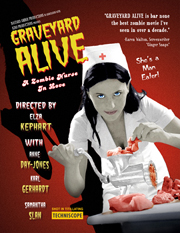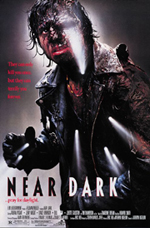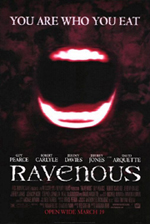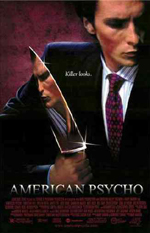|

O The Horror
The top five horror films directed by women
By Michelle Humphrey
Somewhere down the road from The Bates Motel and Camp Crystal Lake
lies the lesser known Dark Side: It’s the Colton farm where a cowboy
turns into a vampire. It’s a hospital in Quebec where a geeky nurse
is infected by a zombie and suddenly becomes a sexpot. And it’s
the setting of other horror stories that are distinct from the same
old corpse kitsch and slasherfest because they ingeniously weave horror
elements into westerns, satires, and other genres. These films also
happen to be directed by women. Psycho and Friday the Thirteenth
will always be classics, but here’s a glimpse into some of the
weird and gruesome worlds that are oh-so-overlooked by horror countdowns:
the top five movies by the finest mistresses of macabre.
5. The Mafu Cage (1978)
Based on the play by Eric Westphal, You and Your Clouds, Karen
Arthur’s Mafu Cage stars eccentric murderess Cissy (Carol
Kane), who kills her way up the evolutionary scale from monkeys to men.
Her madness emerges from an obsession with her dead father (a scientist
who studied primates), an oppressive love for her sister Ellen, and
a desire to live in the jungle (she grows one in her house). The dimly
lit camera shots, tribal percussion, and increasingly unhinged voice
of Kane leave you feeling creepy for days.
 4.
Graveyard Alive: A Zombie Nurse in Love (2003) 4.
Graveyard Alive: A Zombie Nurse in Love (2003)
In horror flicks, there’s not much room for complicated female
characters. (Anyone up for another Token Slut Who Gets Slashed After
Sex?) There’s also no place for soulful zombies. Enter the socially
awkward Nurse Patsy Powers. When Patsy’s bitten by one of the Undead,
a subsequent transformation leads to her sexual awakening and a dilemma
over morally ambiguous meat-eating that’s original and campy. Directed
by Elsa Kephart, Graveyard Alive is retro-horror (think monster
movies from the 1950s) with a feminist twist.
 3.
Near Dark (1987) 3.
Near Dark (1987)
Hailed as the first non-gothic vampire movie, Kathryn Bigelow’s
Near Dark borrows a cast from James Cameron’s Aliens
(Lance Henriksen, Jenette Goldstein, and Bill Paxton). Reincarnated
here as derelict chic, this threesome leads a pack of world-weary vampires
who’ve been roaming the American West for the last hundred years,
and stick together like the Sopranos. Their nightly slaughters are bloodlust-as-usual,
until the newbie in the group, the pixie-esque Mae, turns her cowboy
boyfriend into a vampire who doesn’t fit in and threatens the clan’s
survival. Arguably a predecessor to Neil Jordan’s Interview
with the Vampire, this film is a murkier and much more compelling
portrait of good ol’-fashioned supernatural angst.
 2.
Ravenous (1999) 2.
Ravenous (1999)
This movie has it all: panoramic mountain scenes, spooky banjo music,
and a blood-drenched David Arquette. The year is 1847, and Captain Boyd
(Guy Pearce) has been reassigned to a frontier way station where he
crosses paths with Colonel Ives, an officer transformed into a Windigo
— a creature that gains fantastical powers by eating human flesh.
Director Antonia Bird melds a shrewd commentary about modern body obsessions
with a rollicking drama. The film explores the grotesque with a smart
sense of humor, and Robert Carlyle as Ives is sinisterly delicious.
 1.
American Psycho (2000) 1.
American Psycho (2000)
Based on the controversial 1991 novel by Brett Easton Ellis, Mary
Harron’s American Psycho is the ultimate hybrid of satire
and horror. Set in the cocaine-crazed 1980s, the movie mocks the cartoonish
serial killer Patrick Bateman (Christian Bale), who kills by night.
By day, he practices a ridiculous skin-care-and-exercise regime; transports
himself to meditative places with the music of Huey Lewis; and hints
to his elitist peers that he’s a homicidal maniac. The screenplay,
co-written by Harron and Guinevere Turner, bridges pop-culture pulp
with interiors so terrorizing, the movie brilliantly returns the horror
genre to its subversive roots. (Not to be confused with American
Psycho II, which U-turns right back to the mainstream fright-fluff
regularly churned out.)
|